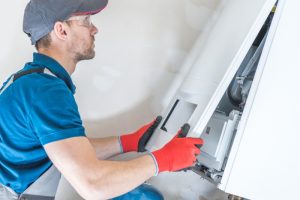As the cold weather sets in and your faithful furnace hums away in the background you may find yourself facing a common homeowner dilemma. Does your furnace in Lakeside, MT, need repairs or replacement? It’s a decision that requires a balance between the value of your trusty heating unit and the practicality of making sure that your home stays warm and cozy. Let’s look at the key considerations to help you determine whether it’s time for a furnace repair or if a replacement is on the horizon.
Age Isn’t Just a Number
One of the first factors to consider is the age of your system. Furnaces have a lifespan. If yours is approaching or has surpassed the 15 to 20-year mark, it might be showing signs of wear and tear that are beyond simple repairs. Newer models are often more energy efficient and come with advanced features that can result in long-term savings on your energy bills.
Take a moment to reflect on the recent history of your system. While a well-maintained furnace may only need occasional fixes, a pattern of recurring issues could be a sign that your heating system is on the decline. Consider the cumulative cost of these repairs. If it’s approaching or exceeding the cost of a new furnace, then replacement might be the more economical choice.
Energy Efficiency Matters
Over the years advancements in heating technology have led to more energy efficient furnace models. If your current system is guzzling gas or electricity and leaving you with high utility bills, upgrading to a more efficient model could result in substantial savings over time. Look for furnaces with high annual fuel utilization efficiency ratings to make sure that you’re getting the most heat for your dollars.
Unusual Noises and Carbon Monoxide Concerns
Is your system starting to sound like a clattering percussion band or failing to keep your home consistently warm? Strange noises and performance issues are clear indicators that your unit might be struggling. While some issues can be fixed with repairs, persistent problems might signal internal damage or wear that warrants a replacement.
Safety should always be a top priority. If you detect the presence of carbon monoxide or suspect a leak, it’s a situation that requires immediate attention. Older furnaces may be more prone to issues related to combustion. This makes replacement a safer option for the well being of your household.
Cost-Benefit Analysis
Finally, weigh the costs and benefits of repair versus replacement. Factor in the age of your furnace, the frequency and cost of recent repairs and the potential energy savings from a newer, more efficient model. It’s an investment in your home’s comfort and your peace of mind.


